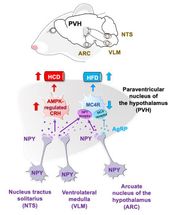Red meat and fish consumption in China associated with risk of diabetes
Advertisement
Previous studies in western countries have linked eating red meat with diabetes but patterns of meat consumption in China are different - people in China tend to have mainly plant-based diets and eat less red meat than those in western countries.

Red meat and fish consumption in China associated with risk of diabetes
University of Oxford
The incidence of diabetes in China has increased rapidly since the early 1980s, and currently affects approximately 10% of adults. About half of this increase can be attributed to a rise in adiposity and to factors such as smoking and reduced physical activity.
In a paper published today in Diabetologia, Huaidong Du and colleagues from the China Kadoorie Biobank (CKB) investigated the association of red meat, poultry and fish consumption with incidence of diabetes in a Chinese population.
Between 2004 and 2008, the CKB recruited and surveyed just over half a million men and women from ten rural and urban areas of China. The baseline survey collected information on diet and other health-related factors. Over nine years of follow-up 14,931 incidences of new onset diabetes were recorded among 461,036 participants who did not have diabetes, cardio-vascular disease or cancer at the start of the study.
The new research found that 47% of participants reported regularly eating red meat four or more days a week, 8.9% reported eating fish four or more days a week and 1.3% ate poultry four or more days a week. Those who consumed red meat more frequently tended to be younger, male, live in urban areas, have higher income and levels of education and be more likely to smoke and drink alcohol regularly.
Although the study was unable to distinguish between different types of red meat or between processed and unprocessed red meat the nationally representative nutrition survey showed that unprocessed pork accounts for about 80% of red meat consumption in China.
After adjusting for adiposity and other potential confounding factors the researchers found that each 50g/day increase in red meat and fish intake was associated with 11% and 6 % higher risk of diabetes respectively. The significant positive association between both red meat and fish consumption and diabetes risk was more pronounced in men than women and in urban than rural areas. There was no association between eating poultry and diabetes risk.
The rural and urban differences might be driven by the relatively low iron status in rural participants, because iron over-load has been recognised as one of the main mechanisms underlying the association between red meat consumption and diabetes risk. However as there is no iron status data available in the current study future research is needed to investigate this hypothesis.


































































